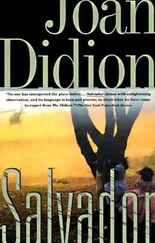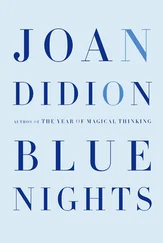Joan Didion - Vintage Didion
Здесь есть возможность читать онлайн «Joan Didion - Vintage Didion» весь текст электронной книги совершенно бесплатно (целиком полную версию без сокращений). В некоторых случаях можно слушать аудио, скачать через торрент в формате fb2 и присутствует краткое содержание. Год выпуска: 2004, Издательство: Vintage Books, Жанр: Биографии и Мемуары, Публицистика, на английском языке. Описание произведения, (предисловие) а так же отзывы посетителей доступны на портале библиотеки ЛибКат.
- Название:Vintage Didion
- Автор:
- Издательство:Vintage Books
- Жанр:
- Год:2004
- ISBN:нет данных
- Рейтинг книги:4 / 5. Голосов: 1
-
Избранное:Добавить в избранное
- Отзывы:
-
Ваша оценка:
- 80
- 1
- 2
- 3
- 4
- 5
Vintage Didion: краткое содержание, описание и аннотация
Предлагаем к чтению аннотацию, описание, краткое содержание или предисловие (зависит от того, что написал сам автор книги «Vintage Didion»). Если вы не нашли необходимую информацию о книге — напишите в комментариях, мы постараемся отыскать её.
Vintage Didion — читать онлайн бесплатно полную книгу (весь текст) целиком
Ниже представлен текст книги, разбитый по страницам. Система сохранения места последней прочитанной страницы, позволяет с удобством читать онлайн бесплатно книгу «Vintage Didion», без необходимости каждый раз заново искать на чём Вы остановились. Поставьте закладку, и сможете в любой момент перейти на страницу, на которой закончили чтение.
Интервал:
Закладка:
As notes from the underground go, Patricia Hearst’s were eccentric in detail. She told us that Bill Harris’s favorite television program was S.W.A.T . (one could, he said, “learn a lot about the pigs’ tactics by watching these programs”); that Donald DeFreeze or “Cinque,” drank plum wine from half-gallon jugs and listened to the radio for allusions to the revolution in song lyrics; and that Nancy Ling Perry, who was usually cast by the press in the rather glamorous role of “former cheerleader and Goldwater Girl,” was four feet eleven inches tall, and affected a black accent. Emily Harris trained herself to “live with deprivation” by chewing only half sticks of gum. Bill Harris bought a yarmulke, under the impression that this was the way, during the sojourn in the Catskills after the Los Angeles shoot-out, to visit Grossinger’s unnoticed.
Life with these people had the distorted logic of dreams, and Patricia Hearst seems to have accepted it with the wary acquiescence of the dreamer. Any face could turn against her. Any move could prove lethal. “My sisters and I had been brought up to believe that we were responsible for what we did and could not blame our transgressions on something being wrong inside our heads. I had joined the SLA because if I didn’t they would have killed me. And I remained with them because I truly believed that the FBI would kill me if they could, and if not, the SLA would.” She had, as she put it, crossed over. She would, as she put it, make the best of it, and not “reach back to family or friends.”
This was the point on which most people foundered, doubted her, found her least explicable, and it was also the point at which she was most specifically the child of a certain culture. Here is the single personal note in an emigrant diary kept by a relative of mine, William Kilgore, the journal of an overland crossing to Sacramento in 1850: “This is one of the trying mornings for me, as I now have to leave my family, or back out. Suffice it to say, we started.” Suffice it to say. Don’t examine your feelings, they’re no help at all. Never take no cutoffs and hurry along as fast as you can. We need a goddamn South American revolutionary mixed up in this thing like a hole in the head. This was a California girl, and she was raised on a history that placed not much emphasis on why .
She was never an idealist, and this pleased no one. She was tainted by survival. She came back from the other side with a story no one wanted to hear, a dispiriting account of a situation in which delusion and incompetence were pitted against delusion and incompetence of another kind, and in the febrile rhythms of San Francisco in the mid-seventies it seemed a story devoid of high notes. The week her trial ended in 1976, the San Francisco Bay Guardian published an interview in which members of a collective called New Dawn expressed regret at her defection. “It’s a question of your self-respect or your ass,” one of them said. “If you choose your ass, you live with nothing.” This idea that the SLA represented an idea worth defending (if only on the grounds that any idea must be better than none) was common enough at the time, although most people granted that the idea had gone awry. By March of 1977 another writer in the Bay Guardian was making a distinction between the “unbridled adventurism” of the SLA and the “discipline and skill” of the New World Liberation Front, whose “fifty-odd bombings without a casualty” made them a “definitely preferable alternative” to the SLA.
As it happened I had kept this issue of the Bay Guardian , dated March 31, 1977 (the Bay Guardian was not at the time a notably radical paper, by the way, but one that provided a fair guide to local tofu cookery and the mood of the community), and when I got it out to look at the piece on the SLA I noticed for the first time another piece: a long and favorable report on a San Francisco minister whose practice it was to “confront people and challenge their basic assumptions … as if he can’t let the evil of the world pass him by, a characteristic he shares with other moral leaders.” The minister, who was compared at one point to Cesar Chavez, was responsible, according to the writer, for a “mind-boggling” range of social service programs — food distribution, legal aid, drug rehabilitation, nursing homes, free Pap smears — as well as for a “twenty-seven-thousand-acre agricultural station.” The agricultural station was in Guyana, and the minister of course was the Reverend Jim Jones, who eventually chose self-respect over his own and nine hundred other asses. This was another local opera, and one never spoiled by a protagonist who insisted on telling it her way.
— 1982
ARRIVAL IN SAN SALVADOR, 1982
The three-year-old El Salvador International Airport is glassy and white and splendidly isolated, conceived during the waning of the Molina “National Transformation” as convenient less to the capital (San Salvador is forty miles away, until recently a drive of several hours) than to a central hallucination of the Molina and Romero regimes, the projected beach resorts, the Hyatt, the Pacific Paradise, tennis, golf, water-skiing, condos, Costa del Sol; the visionary invention of a tourist industry in yet another republic where the leading natural cause of death is gastrointestinal infection. In the general absence of tourists these hotels have since been abandoned, ghost resorts on the empty Pacific beaches, and to land at this airport built to service them is to plunge directly into a state in which no ground is solid, no depth of field reliable, no perception so definite that it might not dissolve into its reverse.
The only logic is that of acquiescence. Immigration is negotiated in a thicket of automatic weapons, but by whose authority the weapons are brandished (Army or National Guard or National Police or Customs Police or Treasury Police or one of a continuing proliferation of other shadowy and overlapping forces) is a blurred point. Eye contact is avoided. Documents are scrutinized upside down. Once clear of the airport, on the new highway that slices through green hills rendered phosphorescent by the cloud cover of the tropical rainy season, one sees mainly underfed cattle and mongrel dogs and armored vehicles, vans and trucks and Cherokee Chiefs fitted with reinforced steel and bulletproof Plexiglas an inch thick. Such vehicles are a fixed feature of local life, and are popularly associated with disappearance and death. There was the Cherokee Chief seen following the Dutch television crew killed in Chalatenango province in March of 1982. There was the red Toyota three-quarter-ton pickup sighted near the van driven by the four American Catholic workers on the night they were killed in 1980. There were, in the late spring and summer of 1982, the three Toyota panel trucks, one yellow, one blue, and one green, none bearing plates, reported present at each of the mass detentions (a “detention” is another fixed feature of local life, and often precedes a “disappearance”) in the Amatepec district of San Salvador. These are the details — the models and colors of armored vehicles, the makes and calibers of weapons, the particular methods of dismemberment and decapitation used in particular instances — on which the visitor to Salvador learns immediately to concentrate, to the exclusion of past or future concerns, as in a prolonged amnesiac fugue.
Terror is the given of the place. Black-and-white police cars cruise in pairs, each with the barrel of a rifle extruding from an open window. Roadblocks materialize at random, soldiers fanning out from trucks and taking positions, fingers always on triggers, safeties clicking on and off. Aim is taken as if to pass the time. Every morning El Diario de Hoy and La Prensa Gráfica carry cautionary stories. “Una madre y sus dos hijos fueron asesinados con arma cortante (corvo) por ocho sujetos desconocidos el lunes en la noche”: A mother and her two sons hacked to death in their beds by eight desconocidos , unknown men. The same morning’s paper: the unidentified body of a young man, strangled, found on the shoulder of a road. Same morning, different story: the unidentified bodies of three young men, found on another road, their faces partially destroyed by bayonets, one face carved to represent a cross.
Читать дальшеИнтервал:
Закладка:
Похожие книги на «Vintage Didion»
Представляем Вашему вниманию похожие книги на «Vintage Didion» списком для выбора. Мы отобрали схожую по названию и смыслу литературу в надежде предоставить читателям больше вариантов отыскать новые, интересные, ещё непрочитанные произведения.
Обсуждение, отзывы о книге «Vintage Didion» и просто собственные мнения читателей. Оставьте ваши комментарии, напишите, что Вы думаете о произведении, его смысле или главных героях. Укажите что конкретно понравилось, а что нет, и почему Вы так считаете.












